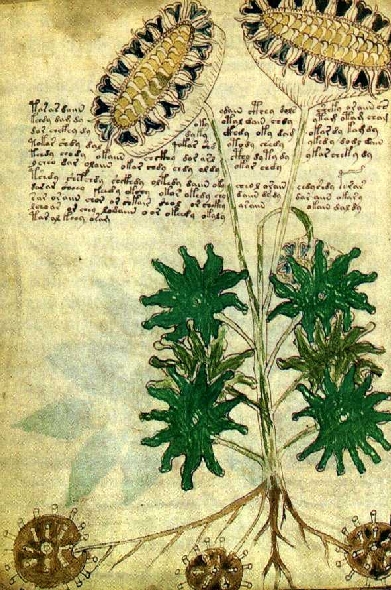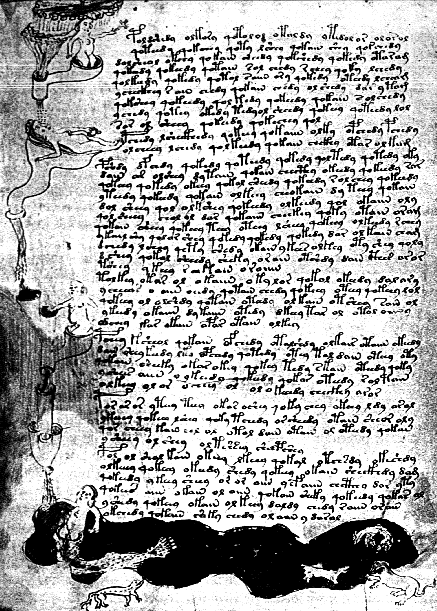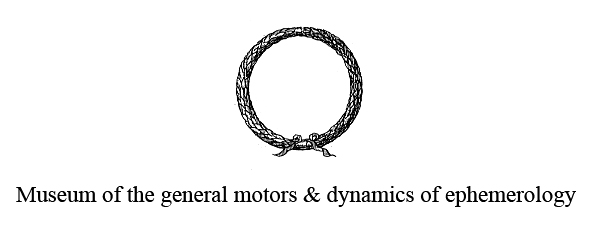The Voynich Manuscript
In 1912, the antiquarian book dealer Wilfrid M. Voynich bought a number of mediaeval manuscripts from an undisclosed location in Europe. Among these was an illustrated manuscript codex of 234 pages, written in an unknown script.

Attached to the manuscript was a letter in Latin dated 1666 from Johannes Marcus Marci of Kronland, once rector of the Charles University of Prague, to the learned Jesuit Athanasius Kircher in Rome, offering the manuscript for decryption and mentioning that it had once been bought by Emperor Rudolf II of Bohemia (1552-1612) for 600 gold ducats. The letter further mentioned that it was believed that the author of the MS was Roger Bacon (the Franciscan friar who lived from 1214 to 1294).
Another early owner of the MS was identified by Voynich when, on the lower margin of the first folio, under special illumination, the erased signature of Jacobus de Tepenec was found. Tepenec was one of Rudolf's private physicians and the director of his botanical gardens and he must have owned the manuscript between 1608, when he received his title "de Tepenec", and 1622, when he died. The MS has changed hands sevetal times, and despite some minor gaps in our knowledge its path from the court of Rudolf to its final resting place, the Beinecke Rare book library of Yale University, can be traced fairly accurately.
The MS became famous when, in the 1920's, William Romaine Newbold proposed a spectacular decipherment with which he meant to prove that it was indeed written by Roger Bacon, and that Bacon had not only dreamt of, but actually built microscopes and telescopes. When this 'solution' of the MS was disproven by John M. Manly in 1931, the MS gradually became a pariah in world of mediaeval studies. In the 1940's and 1960's the eminent cryptanalyst William F. Friedman made several valiant attempts at deciphering the MS, aided by groups of experts, but also he did not find any solution.
In 1961 the book was acquired by H. P. Kraus (a New York book antiquarian) for the sum of $24,500. He later valued at $160,000, but unable to find a buyer he donated it to Yale University. Though officially registered as MS 408, it is still best known as the Voynich Manuscript.


